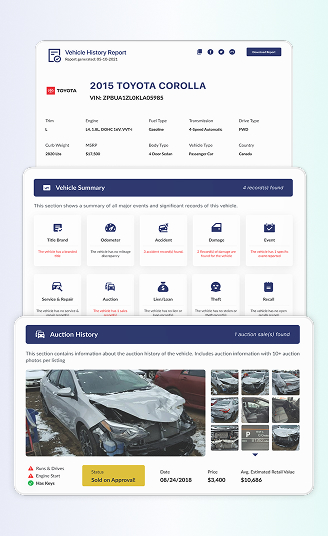Ohio Bill of Sale Form – Download Free Template
Buying or selling a car in Ohio? A bill of sale isn’t just another piece of paperwork – it’s proof the deal happened. While not always required for registration, it protects both buyers and sellers from legal disputes.
What is the Ohio Bill of Sale?
A bill of sale is essential for private sales, especially since the buyer and seller manage all the necessary paperwork themselves. It serves as legal proof of the transaction, clearly documenting key details such as the sale price, date, and vehicle or vessel information. This written agreement formally confirms the change of ownership between the two parties.
Even when purchasing an item from a dealership, the bill of sale acts as an important extra layer of protection. It helps to clarify the terms, resolve any future disputes, and provides a useful backup record if problems arise later. Both the seller and the buyer should keep a copy of this important financial document.
Why Sellers Need a Bill of Sale in Ohio?
If you’re selling a car, the last thing you want is to be held responsible for what happens after it leaves your hands. A bill of sale helps protect you by proving you’re no longer the owner. Imagine selling a car and later getting parking tickets or toll violations, without a bill of sale, that could be a headache to sort out.
It’s also important if a buyer delays the title transfer. The title must be transferred within 30 days in Ohio, or the buyer faces late fees. A bill of sale provides proof that you sold the vehicle on a specific date, which could save you from any legal or financial issues down the road.
Why Buyers Need a Bill of Sale
A bill of sale isn’t just paperwork; it’s your proof of ownership and a safety net if any issues come up. If there’s a delay in transferring the title, this document shows that the car is legally yours.
It also helps prevent disputes over ownership and can be useful for registering the vehicle, obtaining insurance, or resolving any legal or financial issues that may arise after the sale.
Types of Bill Of Sale in Ohio
The Ohio bill of sale is generally categorized by the items being sold, like motor vehicles, boats, trailers, property, or even animals.
- Motor Vehicle: This is one of the most common types of bills of sale in Ohio. It’s used when selling or purchasing a car, truck, or motorcycle. The document is essential for the buyer to register the vehicle with the Ohio Bureau of Motor Vehicles (BMV).
- Trailer: A trailer bill of sale records the transfer of ownership between the seller and buyer. It’s also required when registering the trailer with the BMV.
- Boat/Watercraft: This bill of sale applies to boats, jet skis, and other watercraft. It provides proof of purchase and is necessary for ownership transfer and registration.
- Animal: When selling animals, such as horses or livestock, a bill of sale helps document the sale and confirm the new owner’s legal rights.
- Other Personal Property: A general bill of sale can be used for items that don’t fall into the categories above, such as tools, furniture, or equipment. It serves as proof of transaction and ownership transfer for these types of goods.
What Does the Ohio Bill of Sale Contain?
A good bill of sale isn’t just a handshake in writing; it’s a clear, detailed document. It should include:
- Buyer and seller information – Full names and addresses
- Vehicle details – Make, model, year, VIN, mileage
- Sale price – The amount paid for the vehicle
- Date of sale – When ownership officially changes hands
- Signatures – Both parties must sign to make it official
Including these details ensures both parties have proof of the agreement, reducing the risk of misunderstandings.
How to Register a Vehicle in Ohio – Simple Steps
Once you buy a vehicle, follow these steps to register it in Ohio:
Step 1: Gather What You Need
Before heading to the BMV, make sure you have all the necessary documents ready:
- Signed Title – The seller must sign it over to you.
- Valid ID – A state-issued driver’s license or ID.
- Proof of Insurance – Required for registration.
- VIN Inspection – Only if the car is from out of state (available at the BMV or a dealership).
- Registration Fees – Costs vary by vehicle and location.
Step 2: Visit the BMV
Head to your nearest Bureau of Motor Vehicles (BMV) with your documents.
Step 3: Register Your Car
Once you have all the necessary documents, it’s time to make it official. Head to the BMV with everything in hand and follow these steps:
- Submit your paperwork
- Pay the fees
- Get your license plates and registration sticker
Step 4: Transfer the Title
Make sure the title is officially transferred to your name. Do this within 30 days to avoid penalties.
Step 5: Keep Your Documents Safe
Once registered, keep your registration, title, and plates in a secure place.
Ohio VIN Check – Verify Vehicle History Before You Buy
If you are planning to buy a used vehicle, you must perform an Ohio VIN check and get the full report before deciding to purchase the car. The VIN check lets you see the vehicle’s specifications and important records, which can include auctions, recalls, past usage, and other details.
Mileage History
Title Brand
Ownership History
Warranty Status
Sales History
Salvage Title
Usage History
Repair Cost
Auction History
Hail Damage
Ownership Duration
Recalls History
Accident History
Flood Damage
Lien & Loans
Maintenance Schedule
Get a Vehicle Bill of Sale by State
Each state has its own requirements for an auto bill of sale. Click below to find the template for your state!
Frequently Asked Questions
Is a bill of sale required to sell a car in Ohio?
No, but the bill of sale is highly recommended for both buyers and sellers.
Can I write my own bill of sale?
Yes, as long as it includes key details like buyer/seller info, vehicle description, price, date, and signatures.
Does a bill of sale prove ownership?
Not by itself. You still need a properly transferred title to prove ownership of a vehicle.
Where can I get a bill of sale form?
You can download a copy of the bill of sale template directly from this page.

